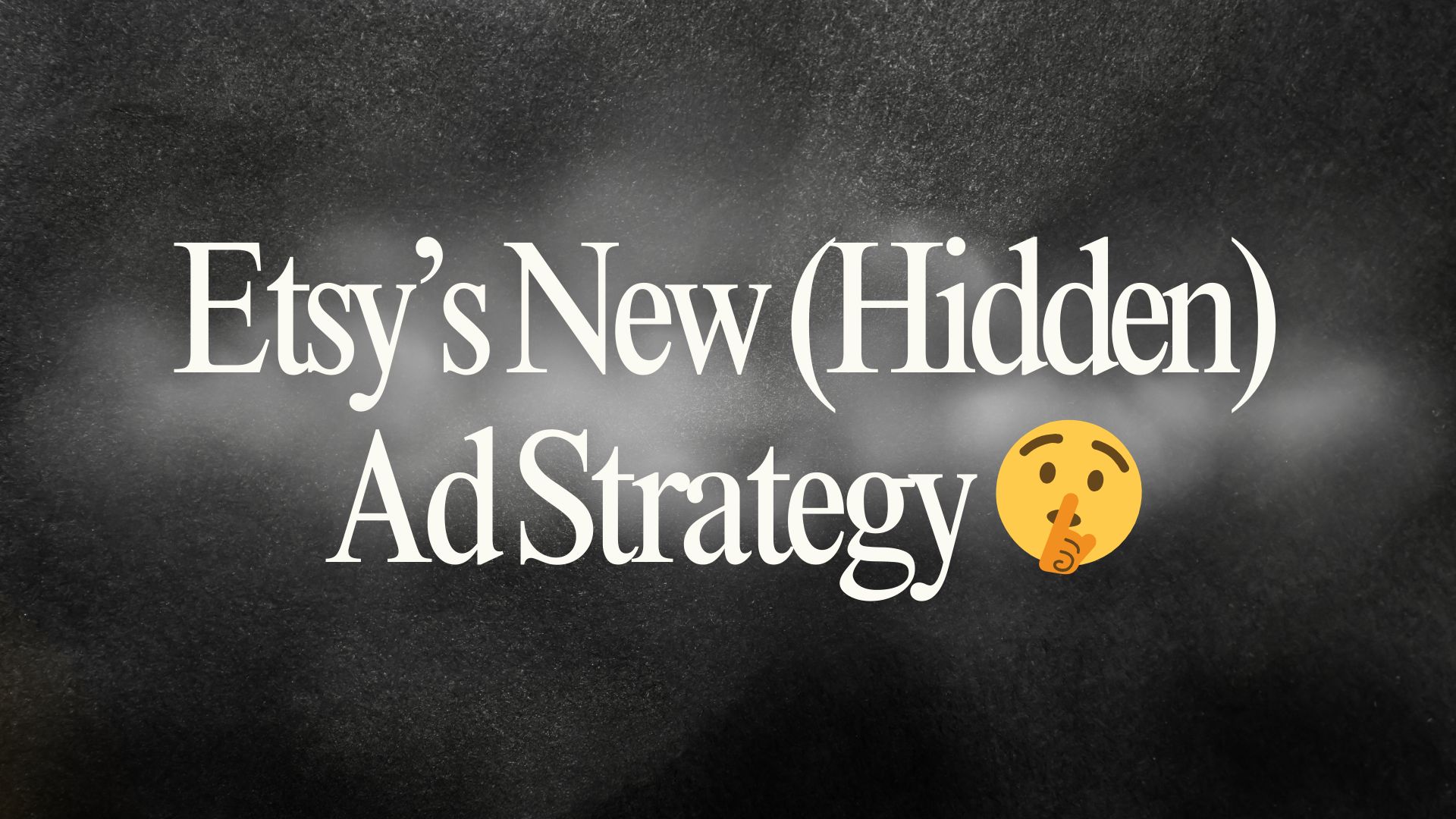Etsy is quietly rolling out a new beta feature for its advertising platform, giving sellers the option to choose between three “ad strategies.” But there’s a catch: you’ll need to raise your daily ad budget to at least $25/day just to access them.
For many small shops, that’s a big jump—$750 a month on ads—before you even see whether the feature delivers on its promises.
What’s Changing in Etsy Ads
Traditionally, Etsy ads have run on a ‘set it and forget it’ basis, with sellers simply choosing their daily budget and letting Etsy’s algorithm do the work.
But in 2025, staying on top of changes like this is key to growth in the handmade eCommerce space—as we covered in our 2025 handmade trend report.
When enabled, sellers can choose between:
Increase Orders
Etsy will push ads into more competitive placements to maximize visibility and sales. The tradeoff? Higher cost per order.
Best For
Jumpstarting orders, competitive categories, and seasonal pushes.
Balance Orders With Returns (default)
Etsy balances ad spend, orders, and ROI in an attempt to keep things steady.
Best For
Consistent growth and predictable spending.
Increase Return
Etsy will bid more conservatively, reducing ad spend and aiming for better ROI. The downside is fewer orders and lower visibility.
Best for
Sellers prioritizing lower costs or working in less competitive niches.
Why Sellers Are Frustrated
On the surface, these options give sellers the appearance of more control. In reality, it’s simply three versions of the same black-box system—spend more, spend the same, or spend less—with no real insight into how Etsy is making decisions behind the scenes.
The biggest frustration? The $25/day minimum budget to unlock these strategies.
For serious shops already spending heavily, this isn’t shocking. But for the majority of sellers—especially those experimenting with ads at $3–10/day—this new paywall is discouraging.
And if you’re in categories where margins are already slim, like many of the profitable handmade products we highlighted for 2025, that extra $750 a month in ad spend can feel impossible to justify.
As one seller put it, it feels like Etsy has introduced “a button to make ads more expensive.”
What This Means for Your Shop
If you’re not currently running ads, nothing changes—your shop will continue under the ‘balanced’ strategy by default.
But if you’re still in the early stages of building traction, it may make more sense to focus on organic growth or even branch out to other platforms. There are plenty of alternative marketplaces for handmade sellers where you can test products without locking yourself into a steep ad budget.
If you’ve been considering ads or testing them at lower spend levels, here’s what to keep in mind:
- Don’t run ads on a brand-new shop. Without proven organic sales, you’ll likely waste money.
- Test only when you have consistent daily sales. Ads work best once Etsy already knows your audience and what products sell.
- Budget for a full month. Ads need at least 30 days of consistent spend to give meaningful results. If you only run $2/day and run out of budget in 90 minutes, you’ll never get usable data.
- Match strategy to your goals. Want a seasonal sales push? “Increase Orders” might make sense. Trying to keep costs lean? “Increase Return” could be worth testing. But don’t expect miracles.
The Bottom Line
Etsy’s new ad strategies are less about giving sellers true control and more about nudging higher ad budgets. While the options may help certain shops fine-tune their approach, most sellers will find little difference beyond how quickly their budget drains.
Until Etsy provides more transparency, ads remain what they’ve always been: a gamble. Whether that gamble pays off depends far more on the strength of your products and listings than on which ad “strategy” you click.
At the end of the day, your products and the strength of the handmade industry matter more than Etsy’s latest ad experiment. The industry itself is booming, projected to hit nearly $2 trillion—as we broke down in our 2025 handmade industry report.

Leave a Reply